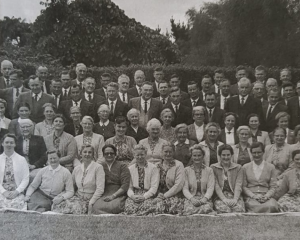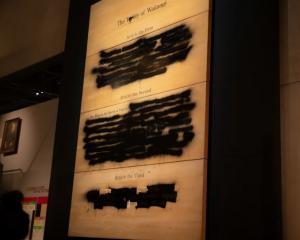A light-proof milk bottle described as a world innovation is being criticised by recyclers who say the complex packaging has a number of drawbacks including potential effects on the environment.
Dairy giant Fonterra last month launched a "world-first" triple layer Anchor bottle, which it says protects milk from light and keeps it fresher and tasting better for longer.
However, the change has prompted a backlash from recycling companies who say the bottles need more energy and resources to manufacture than the single-layer see-through bottle, making them a lower quality and less sought-after recycling product.
The new bottles are made from HDPE, the same plastic as the old bottles.
But recycling companies said the more complex packaging was having a number of detrimental effects on the industry.
"In terms of the value of the resource as a recyclable resource they're less valuable. But they're more expensive and more resource dependent to make, because they're using three different types of HDPE plastic to make those layers, so [the bottles are] heavy on resources and quite inherently wasteful," said a spokeswoman for Auckland recycling company Reclaim.
The company collects material including plastic milk bottles and on-sells them to be recycled.
"We're still taking them and most other recyclers will be, but it's just the benefits they're touting - light proof - I mean you're seeing the consumer backlash," said the spokeswoman.
Wanaka Wastebusters' project manager Sophie Ward agreed the new bottles were being recycled into a lower quality product that could have negative long-term effects.
"There's a lot of pressure coming from China and because they're struggling to find uses for the world's recycling so the more materials put into these mixed [colour] streams, the less valuable that material becomes," she said.
The triple-layer bottle could also have a "big impact" on recycling companies, who received a significantly lower profit for the product, said Miss Ward, who believed Fonterra should have taken the effect on the industry more into consideration.
Wastebusters received 40 per cent of they price they got for the old bottles, she said.
The triple-layer bottles have also frustrated customers who have nominated the product 17 times for the Unpackit Worst Packaging Award 2013.
Other nominations in the category include, Kiwi Blue's eco-twist water bottle, supermarket meat packaging, Down to Earth dishwash refill and McDonald's tea and coffee cups.
Fonterra group marketing manager Craig Irwin said there were 'myths' about the new packaging, including concerns that the three-layer design contained three times as much plastic.
In fact the new bottle had only about one gram more plastic per one-litre bottle, and took no more resources to produce because of improved manufacturing techniques, he said.
"Its overall footprint is neutral for us compared to the previous bottle."
Mr Irwin said recyclers would get less money because the plastic had to be separated into the colour waste stream, but it was just as easily made into new products - including recycling bins provided to schools participating in the Fonterra milk in schools scheme, which were made from 60 per cent recycled milk bottles.
Sales of the milk had increased since the light-proof bottle was introduced, Mr Irwin said. "Early data is looking promising."
He said recycling was considered when designing the new bottle, but the primary driver was improved taste and nutrition.
"The primary role of packaging is to protect the contents, and current milk bottles just don't do a very good job of that."
Milk from the new bottles had been sampled by 18,000 consumers in supermarkets, and 85 per cent could tell the difference, he said.
Mr Irwin said Fonterra was also "empathetic" to concerns that the bottles made it difficult to tell how much milk was left inside.
"But again, in our research people told us they valued the taste and nutrition over the benefits of being able to see the milk."
Marketing Association chief executive Sue McCarty said the level of response about the changed packaging was "testament to how strong the brand is".
"These are challenges that sometimes get thrown up. They're very thorough in their marketing approach to make sure they come up with products and packaging that meets needs of the market. It all depends on how they [Fonterra] respond from here really," she said.
"I don't think it's catastrophic at all. It's how they respond and how they behave with their consumers and how they listen."
- Abby Gillies and Heather McCracken of APNZ












